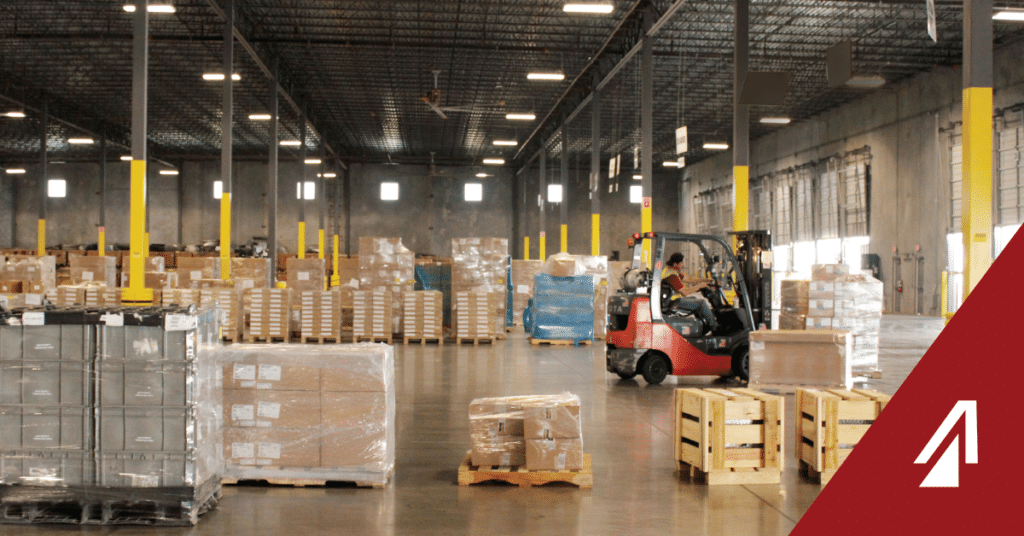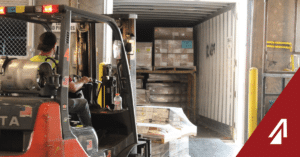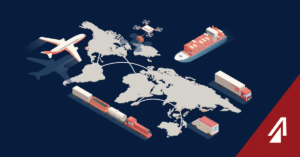The North American supply chain is a dynamic market with significant growth expected in the coming years. Several industry trends are gaining attention to meet current challenges, while also tackling innovative developments. At ProTrans International, we expected the most impactful trends to be centered on Nearshoring, Resilience, Automation, Sustainability, and Talent Attraction and Retention. Let’s take a closer look at how each of these trends is shaping up the existing landscape and leading us to a more efficient supply chain.
Nearshoring
With escalating trade conflicts and increasing complexity in global politics, businesses are realizing the importance of reducing their dependence on specific locations for sourcing and manufacturing. Recent disruptions have prompted companies to diversify their sourcing strategies and bring manufacturing closer to their end markets through near-shoring. By moving operations from distant offshore locations to nearby countries, companies can shorten their supply chains, reduce transportation costs, improve agility, and mitigate the risk of potential disruptions.
Mexico has emerged as a promising alternative for manufacturers and has become the largest trade partner for the United States. This strategic move allows companies to leverage Mexico’s proximity, favorable trade agreements, and well-established infrastructure. Moreover, Mexico offers competitive labor costs compared to other countries, including China. This cost advantage, combined with a skilled workforce and a strong manufacturing industry, makes Mexico an attractive option for companies looking to nearshore their operations.
In response to this trend, ProTrans International, a leading logistics provider, is taking an innovative approach to streamline its cross-border services. They are working closely with their customers and partners to shorten the transportation of goods northbound and southbound through the US/Mexico border. By optimizing logistics and leveraging its expertise in cross-border operations, ProTrans aims to enhance efficiency and reduce transit times, enabling companies to capitalize on the advantages of nearshoring in Mexico and ensure their supply chain resilience to stay competitive in a rapidly evolving global landscape.
Resilience
Following massive disruptions in recent years, businesses are reevaluating their supply chain strategies. The focus is now on enhancing resilience and implementing effective risk management measures. This transformative process includes diversifying suppliers, rethinking sourcing practices, identifying alternative routes and modes of transportation, and having robust contingency plans. Data collection and analytics also play a crucial role in anticipating potential risks and developing proactive logistics solutions.
By integrating resilience into their logistics networks, businesses can swiftly adapt and recover from disruptions, minimizing any impact on the supply chain. Logistics resilience enables companies to be proactive and flexible when disruptions occur, allowing operations to continue with minimal downtime. It underscores the importance of data collection, necessitating a high level of visibility and transparency throughout the supply chain. Real-time information on inventory levels, transportation status, and supplier performance becomes essential. Additionally, this resilience approach fosters a culture of continuous improvement and innovation.
Automation
The supply chain and logistics industry is poised for a remarkable transformation driven by digitalization, artificial intelligence (AI), blockchain technology, and automation. These cutting-edge technologies will revolutionize operations, boosting efficiency and optimization.
AI-driven systems will enable businesses to streamline processes, eliminating bottlenecks and inefficiencies. Data collection and machine learning will enhance visibility at each step of the supply chain and in turn, enable companies to achieve optimal inventory management. Moreover, AI will empower businesses to accurately predict demand, providing invaluable insights for improved resource planning.
The impact of AI and automation will also extend to warehouses and distribution centers as robotics and automated technologies take center stage. This will further help reduce costs, drive efficiencies, and address labor shortages in the market.
In this era of technological advancement, companies that embrace AI and automation will gain a competitive edge and pave the way for future success. The supply chain and logistics landscape is being reshaped, and those who seize the opportunity to harness the power of these transformative technologies will reap long-term rewards.
Sustainability
Sustainability has become a burning issue across all sectors, especially within the supply chain and logistics industry. While transportation is responsible for the largest portion of global CO2 emissions, it has been discovered that approximately 80% of emissions occur within the supply chain itself. By implementing sustainable practices in the supply chain, companies can significantly reduce their carbon footprint and, as a result, decrease operational costs.
Throughout the logistics industry, organizations can take practical steps across different processes, such as procurement, inventory management, distribution, warehousing, transportation, packaging, pallets, and risk management, to achieve their sustainability objectives.
Let’s consider transportation activities as an example, as they are the primary source of CO2 emissions worldwide. By engineering optimized routes, maximizing truck utilization, and investing in alternative fuel vehicles, emissions can be effectively reduced. Additionally, the implementation of sophisticated consolidation networks, like the established network of ProTrans, can minimize the amount of less-than-truckload (LTL) shipping, further decreasing traffic and emissions.
Warehouses, known for their energy-intensive operations, also present an impactful opportunity for sustainability improvements. Companies can enhance their sustainability by investing in energy-efficient equipment, optimizing warehouse layouts to maximize efficiency, incorporating natural light, and utilizing renewable energy sources.
Attraction and Retention
The demand for skilled professionals in the supply chain is growing, driven by factors such as near-shoring, consumer expectations for faster deliveries, and the need for efficiency. Companies require talent with the right skills and expertise to tackle these challenges and bring value to their roles. Additionally, new technologies, sustainability efforts, and data collection necessitate qualified individuals who can effectively manage these technologies with advanced technical skills.
However, several obstacles limit the talent pool in today’s market. Labor shortages, a decreasing number of experienced industry workers, and the retirement of baby boomers contribute to a talent pool gap that jeopardizes organizations’ ability to achieve efficiency and meet market demands. Replacing these experienced professionals with qualified candidates is becoming increasingly difficult, given their specialized skills and industry-specific knowledge. Consequently, talent attraction and retention, as well as upskilling and employee development, have become top priorities for organizations.
Companies have recognized the importance of investing in their supply chain talent to navigate disruptions, mitigate risks, and meet the growing demands for supply chain efficiency. To address these challenges and capitalize on opportunities, companies are putting a significant emphasis on talent attraction and retention in the North American supply chain. They are implementing recruitment strategies, creating employee development programs, and fostering attractive work environments to attract and retain skilled professionals who can drive innovation, optimize operations, enhance customer satisfaction, and ensure the resilience and success of their supply chains.
ProTrans International is a customer-centric specialized logistics provider that takes a holistic approach and works in partnership with its customers to optimize the supply chain. We are happy to help our customers embrace these trends and navigate challenges in today’s market. Get in touch with us today to start a conversation about your logistics needs.
About ProTrans International
ProTrans specializes in reliable Inbound to Manufacturing integrated with end-to-end, cross-border solutions to, from, and within North America. Backed by innovative, best-in-class service, we focus on engineering high-quality, lower-cost solutions enabled by our global team of experts, in-house Transportation Management System (TMS), and providing visibility of all shipments. Our solutions include Cross Border Consolidation, Supply Chain Management, Third-Party Logistics (3PL), Dedicated Transportation, Global Forwarding, Expedites, and Value-Added Services (Warehousing, Customs Brokerage).



